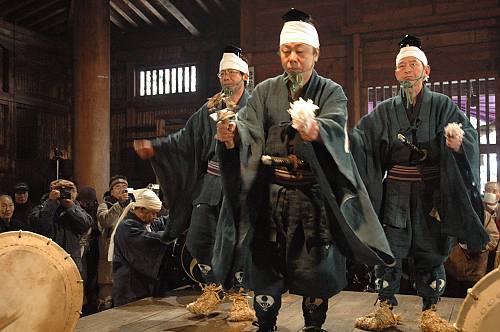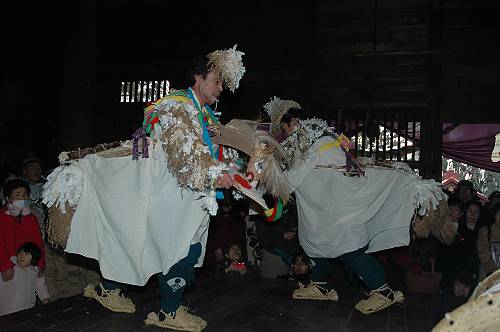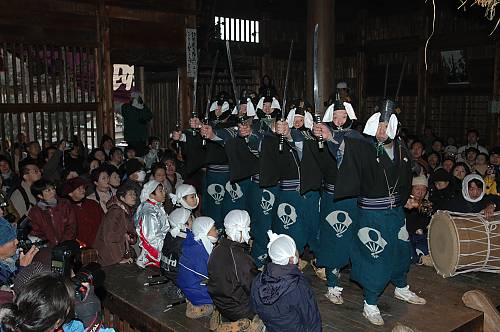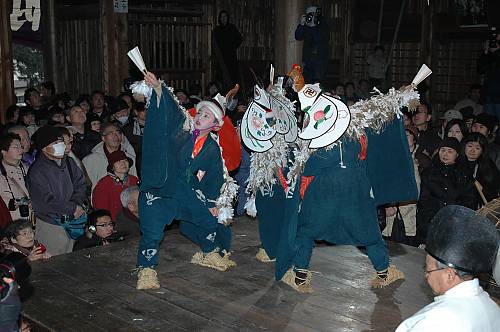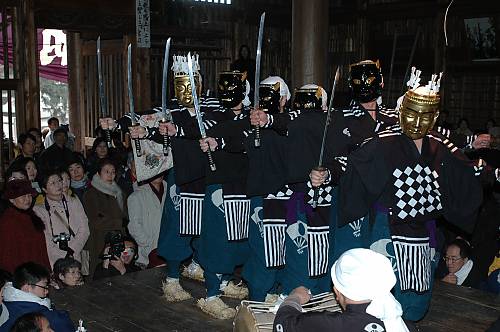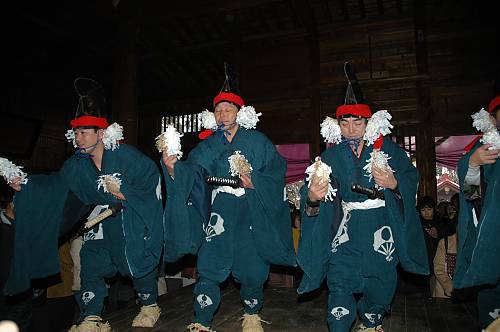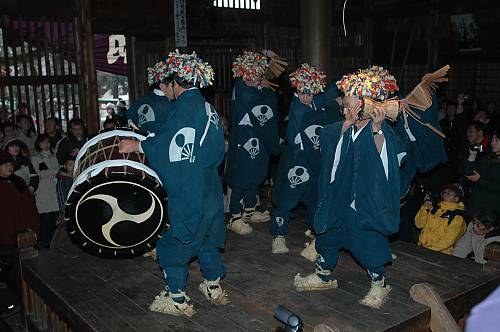Dainichido Bugaku
Inscribed in 2009 (4.COM) on the Representative List of the Intangible Cultural Heritage of Humanity

According to legend, travelling performers of bugaku, the ritual dance and music of the imperial palace, visited Hachimantai Town in northern Japan in the early eighth century, during the reconstruction of Dainichido, the shrine pavilion. The ritual performance of Dainichido Bugaku takes its name from this story, but the art evolved considerably since, reflecting local features as elders transmitted it to the young within each of the four local communities of Osato, Azukisawa, Nagamine and Taniuchi. On the second day of each year, the 2 January, the people of these communities proceed from dedicated sites to the shrine, where they perform nine sacred dances from dawn to noon as a prayer for happiness in the New Year. Some of the dances involve masks (including the imaginary lion-like shishi of myths), others include child dancers, reflecting variations among the four groups. The practice deepens the sense of affiliation with the local community, for both the participants and the many residents who come to observe the tradition each year. Although the Dainichido Bugaku was interrupted for nearly six decades in the late eighteenth century, the people of Hachimantai take great pride in the restored tradition, which is the spiritual core of their solidarity.
